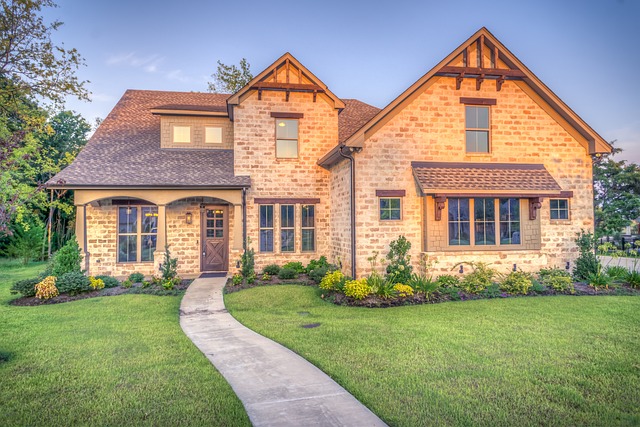House sitting necessitates a personalized approach that aligns homeowner expectations with sitter responsibilities, ensuring the property's security and the owner's lifestyle preferences are maintained while they are away. A successful house sitting arrangement involves tailored plans for pet care, garden maintenance, and adherence to daily routines, accompanied by clear instructions and emergency contacts. The integration of smart home technology has further enhanced this service, allowing sitters to monitor and manage various household functions remotely. House sitters must also navigate legal and ethical considerations, upholding property legislation, and ensuring the privacy and integrity of the home. Security measures such as timed lighting systems and robust locks are essential, along with climate control adjustments for comfort. The well-being of pets requires a deep understanding of their unique needs, while addressing any routine maintenance issues is crucial to keep the home functioning properly. Overall, house sitting services are about creating a secure and comfortable living environment that mirrors the owner's expectations, leveraging technology and ethical practices to deliver a seamless experience for both homeowners and their properties.
Explore the nuanced world of house sitting with our comprehensive guide, tailored to suit your unique lifestyle. We delve into the intricacies of customized house sitting plans, ensuring your home remains in impeccable condition while you’re away. From navigating the initial arrangement to leveraging cutting-edge technology for peace of mind, this article covers it all. Discover how to legally and ethically engage in house sitting, with a focus on maximizing security and comfort. Whether you’re a homeowner seeking trustworthy care or a sitter looking for opportunities, our insights will guide you through the process of creating a seamless house sitting experience.
- Understanding the Essence of Customized House Sitting Plans
- Tailoring Your House Sitting Arrangement: A Step-by-Step Guide
- The Role of Technology in Enhancing House Sitting Experiences
- Legal and Ethical Considerations When Engaging in House Sitting
- Maximizing Security and Comfort During Your House Sitting Assignment
Understanding the Essence of Customized House Sitting Plans

When considering the responsibilities and nuances of house sitting, customized plans play a pivotal role in ensuring a seamless transition for both homeowners and sitters. These tailored arrangements are not one-size-fits-all; they take into account the unique needs, preferences, and schedules of each party involved. For homeowners, the security and care of their property are paramount, and a customized plan can address specific concerns such as maintenance routines, pet care, or garden upkeep. For sitters, understanding the daily routines, system operations, and local emergency contacts becomes easier with a personalized guide, ensuring they can effectively manage the household without disrupting the home’s established lifestyle. Customized house sitting plans are a testament to the importance of flexibility, communication, and trust between the parties, facilitating a harmonious arrangement that mirrors the absent homeowner’s expectations as closely as possible.
The essence of customized house sitting plans is rooted in their adaptability and attention to detail. These plans are crafted to align with the specific requirements of the property and its inhabitants, whether that includes caring for pets or maintaining a collection of fine art. The process begins with an exchange of information, where homeowners communicate their preferences, routines, and any particular instructions necessary for the upkeep of their home. Sitters, on the other hand, provide input on their skills, availability, and experience to ensure that they are well-suited to the task at hand. This collaborative approach ensures that all aspects of the house sitting arrangement are covered, from routine tasks to emergency procedures, leading to a more secure and comfortable experience for both parties. With the rise of house sitting as an alternative to traditional pet boarding or rental agreements, the demand for these customized solutions is on the incline, making them an increasingly important service in the realm of property care.
Tailoring Your House Sitting Arrangement: A Step-by-Step Guide

When embarking on a house sitting arrangement, it’s crucial to tailor the terms to suit both the homeowner’s needs and your skills. This step-by-step guide will help you navigate the process of customizing a house sitting plan that ensures a smooth experience for all parties involved. Begin by assessing the specific requirements of the property; consider the size of the home, the number of pets or plants, and any unique maintenance tasks. Communicate openly with the homeowner to understand their expectations regarding living conditions, utility management, and security protocols. Establish clear guidelines for your responsibilities, including routine maintenance, emergency procedures, and care standards for any animals or plants in your charge. It’s also important to discuss the scope of your access to the property and any household items you’re permitted to use. By setting up a detailed agreement that addresses these points, you can create a mutually beneficial arrangement that provides peace of mind for the homeowner and a comfortable living environment for you during your house sitting tenure. Remember to document all the terms and conditions in writing, ensuring both parties sign the agreement to avoid any misunderstandings later on. This meticulous preparation will lay the foundation for a successful house sitting experience, allowing you to focus on enjoying the responsibilities of temporary home ownership while providing an invaluable service to homeowners who trust you with their homes and belongings.
The Role of Technology in Enhancing House Sitting Experiences

House sitting, a service that involves taking care of a homeowner’s residence and pets while they are away, has evolved significantly with the integration of technology. Modern house sitters now have access to a plethora of digital tools and platforms that facilitate smoother transitions into their temporary living arrangements. These technologies range from smart home devices that allow sitters to control home systems remotely, to comprehensive house sitting apps that match property owners with trustworthy sitters. Smart home technology enables sitters to monitor security systems, adjust lighting, manage climate control, and even feed pets through mobile applications, providing peace of mind for both the homeowner and the sitter. Furthermore, these platforms often include features such as real-time updates, communication channels between sitters and homeowners, and detailed instructions or checklists to ensure all aspects of house sitting are managed effectively. The integration of technology in house sitting not only enhances security and convenience but also fosters a more reliable and efficient experience for all parties involved. This results in a trustworthy and seamless arrangement that leverages the best of modern innovation to maintain the comfort and integrity of the home being sat.
Legal and Ethical Considerations When Engaging in House Sitting

Engaging in house sitting requires careful consideration of both legal and ethical implications to ensure a smooth and lawful arrangement for both homeowners and sitters. From a legal standpoint, it’s imperative to clarify the terms of occupancy with the homeowner. This includes understanding the scope of permissions granted while in residence, such as utilizing certain utilities or amenities, and adhering to local laws regarding habitation and property use. Additionally, house sitters must be aware of their responsibilities under property laws, which may include basic maintenance tasks, emergency response protocols, and securing the property against unauthorized access.
Ethically, a house sitter should maintain a high standard of integrity and responsibility. This involves respecting the homeowner’s privacy and personal belongings, ensuring that the living space remains in the condition it was found. Moreover, ethical considerations extend to the sitter’s role as a temporary steward of someone else’s property. This includes adhering to the homeowner’s instructions, treating the residence with care, and acting as a responsible and trustworthy occupant. By understanding and respecting these legal and ethical boundaries, house sitters can contribute to a positive and secure experience for all parties involved in the house sitting arrangement.
Maximizing Security and Comfort During Your House Sitting Assignment

Engaging in house sitting is a responsible task that requires a balance between security and comfort to ensure both the homeowner’s and the pet owner’s assets are protected, and their living space remains a welcoming environment. A tailored house sitting plan can significantly enhance security by employing strategies such as timed lighting systems to mimic occupancy, secure all entry points with reliable locks, and install visible surveillance cameras. These measures deter potential intruders and provide peace of mind. Additionally, regular checks of the alarm system and maintaining a log of all visitors or services scheduled can further fortify the property’s security.
Comfort is equally paramount during a house sitting assignment. Customized house sitting plans often include adjustments to the home’s climate control to preserve the integrity of the HVAC system while ensuring that the indoor environment remains pleasant. Setting up comfortable sleeping arrangements and familiarizing oneself with the home’s appliances and systems can make the living situation more seamless. Furthermore, pet care is a critical aspect of house sitting; understanding each pet’s needs, routines, and preferences ensures their well-being is attended to, which is integral for maintaining a harmonious household in the absence of the owners. House sitters should also be prepared to handle routine maintenance issues, such as minor plumbing leaks or power outages, to maintain the comfort and functionality of the home throughout the assignment.
House sitting is a mutually beneficial arrangement that requires careful planning and consideration. This article has delved into the multifaceted nature of customized house sitting plans, offering readers a comprehensive understanding of how to tailor their experiences to suit their unique needs. From the initial steps of setting up a plan to leveraging technology for enhanced security and comfort, each aspect of house sitting has been explored with attention to legal and ethical frameworks. Whether you’re a homeowner seeking peace of mind or a sitter looking for an opportunity to live in diverse settings, these strategies will guide you towards a successful house sitting arrangement. With the right approach, house sitting can be a rewarding experience for all parties involved.
